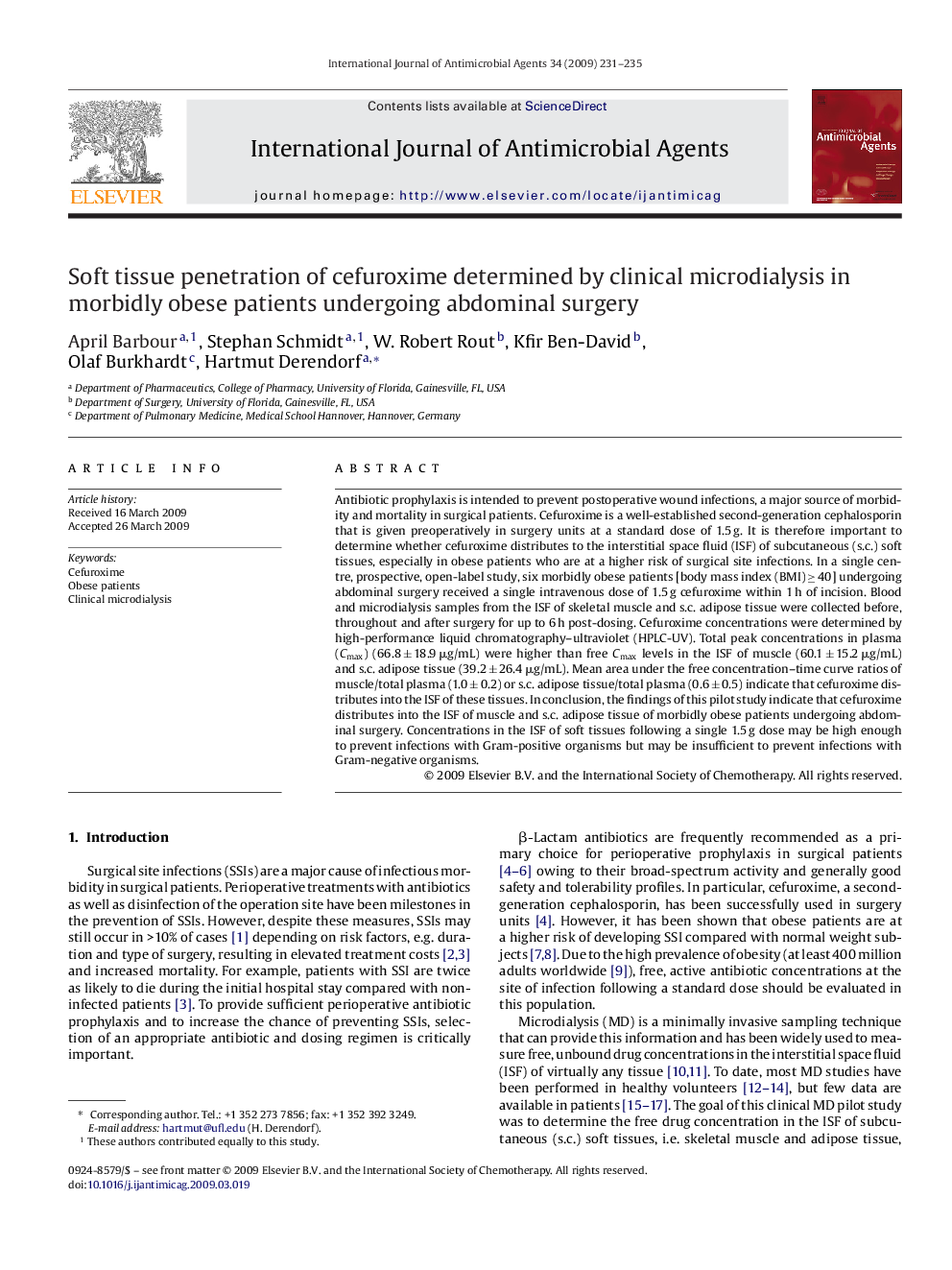| Article ID | Journal | Published Year | Pages | File Type |
|---|---|---|---|---|
| 3360265 | International Journal of Antimicrobial Agents | 2009 | 5 Pages |
Antibiotic prophylaxis is intended to prevent postoperative wound infections, a major source of morbidity and mortality in surgical patients. Cefuroxime is a well-established second-generation cephalosporin that is given preoperatively in surgery units at a standard dose of 1.5 g. It is therefore important to determine whether cefuroxime distributes to the interstitial space fluid (ISF) of subcutaneous (s.c.) soft tissues, especially in obese patients who are at a higher risk of surgical site infections. In a single centre, prospective, open-label study, six morbidly obese patients [body mass index (BMI) ≥ 40] undergoing abdominal surgery received a single intravenous dose of 1.5 g cefuroxime within 1 h of incision. Blood and microdialysis samples from the ISF of skeletal muscle and s.c. adipose tissue were collected before, throughout and after surgery for up to 6 h post-dosing. Cefuroxime concentrations were determined by high-performance liquid chromatography–ultraviolet (HPLC-UV). Total peak concentrations in plasma (Cmax) (66.8 ± 18.9 μg/mL) were higher than free Cmax levels in the ISF of muscle (60.1 ± 15.2 μg/mL) and s.c. adipose tissue (39.2 ± 26.4 μg/mL). Mean area under the free concentration–time curve ratios of muscle/total plasma (1.0 ± 0.2) or s.c. adipose tissue/total plasma (0.6 ± 0.5) indicate that cefuroxime distributes into the ISF of these tissues. In conclusion, the findings of this pilot study indicate that cefuroxime distributes into the ISF of muscle and s.c. adipose tissue of morbidly obese patients undergoing abdominal surgery. Concentrations in the ISF of soft tissues following a single 1.5 g dose may be high enough to prevent infections with Gram-positive organisms but may be insufficient to prevent infections with Gram-negative organisms.
